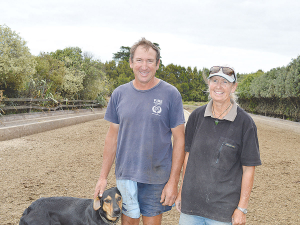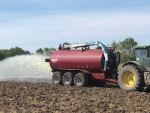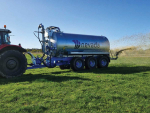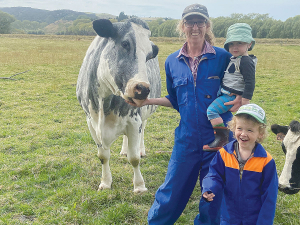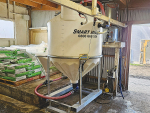Waikato farmer Mark Bon recalls a visit to his farm by BioWorks founder Clive Breeds over 10 years ago.
He took Breeds out to the paddock and showed him two strips of pasture, one with grass and the other almost bare.
"I asked him to tell me which strip had been irrigated with his product, Impact, and he pointed to the strip with long pasture," he tells Dairy News.
"He was wrong: it was the other strip because the cows had munched away all the grass irrigated with his product.
"The cow did not touch the strip irrigated with raw effluent, they were put off by smell. What was interesting is the fact that both strips were spread directly from the cowshed shed yard; Impact was added and spread immediately - it had no time to work in the pond."
Mark and his wife Robyn milk 260 cows on their 93ha property in Mercer. They have been using Impact to treat effluent on their farms since 2010.
He says Impact has been a crucial tool in ensuring the farm-effluent pond remains crust-free.
There's also a benefit to pasture.
The aerobically digested liquid waste on the paddocks results in increased pasture growth with the grass being much more palatable for the animals.
Mark applies 5 litres of Impact per month into the farm's 25m by 30m pond and lets the bacteria do the work.
He says untreated effluent can be awful.
 |
|---|
|
The effluent pond on Mark Bon's farm in Mercer has been free of sludge for nearly 12 years.
|
"It stinks and the cows are put off by it for weeks. Now there's no stink and cows happily eat pasture irrigated by treated effluent, though we still give them two weeks before grazing."
Mark has built a feed pad adjacent to the effluent pond. With no more than a metre of annual rainfall, he relies on supplementary feed like maize silage, molasses and palm kernel expeller (PKE).
Effluent from the feed pad is puhed into the pond where Impact does its work.
He says in no time solids are digested and the silt settle at the bottom of the pond leaving "clear water" on top.
For nine months of the year he irrigates paddocks with the liquid effluent directly from the pond without needing a stirrer. During autumn he uses the stirrer and spreads the mixed silt and liquid effluent on paddocks to boost grass growth.
Mark claims he saves on fertiliser costs, pointing out that he only uses 80 to 90kg of nitrogen fertiliser per hectare annually.
He says there's also no need to invest in effluent infrastructure like separating systems to take solids out of effluent.
"For me, managing effluent is not complicated. I let the bacteria do the work. In autumn I give the grass a good nutrition boost and it works fine for me."
Mark recalls the days when the farm irrigators stopped pumping effluent as solids clogged up irrigator nozzle and pipes.
He says before using Impact, his effluent pond had accumulated a 1m-deep crust. He hired an excavator to dig out the muck and load it onto a tipping trailer for spreading over the farm.
Those days are long gone, he says.
www.bioworks.co.nz





